![]()
![]()
![]()
Use LEFT and RIGHT arrow keys to navigate between flashcards;
Use UP and DOWN arrow keys to flip the card;
H to show hint;
A reads text to speech;
31 Cards in this Set
- Front
- Back
|
Symbiosis |
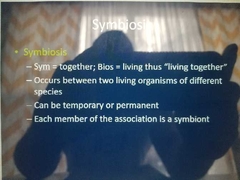
|
|
|
Commensalism |
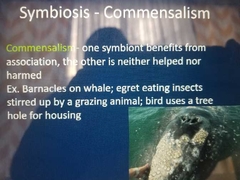
|
|
|
Mutualism |
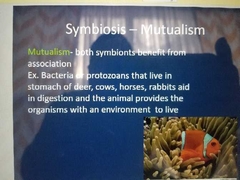
|
|
|
PHORESIS |
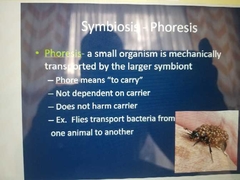
|
|
|
Predator/prey |

|
|
|
Parasitism |
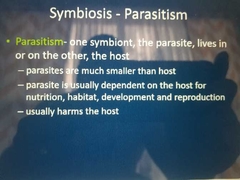
|
|
|
Parasitiasis |
Parasite is present on or in host but there are no clinical signs of the infection. |
|
|
Parasitosis |
Parasite is present on or in the host and there are clinical signs of the infection. |
|
|
Parasiticides |
Used to treat ect and endometriosis parasites |
|
|
Anthelmintics. |
kill roundworms, tapeworms, flukes, and thorny headed worms |
|
|
Araricides |
Kills mites and ticks |
|
|
Antiprotozoals |
Kill protozoans |
|
|
How did parasites harm host? |
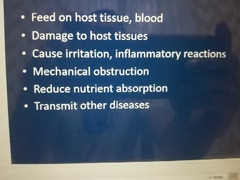
|
|
|
Patasitology |
The study of parasites and diseases caused by parasites. |
|
|
Parasite |
A smaller organism that lives in or on a larger organism at the expense of the larger organism. |
|
|
Endoparasite |
Lives in the body of the host. Host is infected. Ex hookworms, roundworms |
|
|
Ectoparasite |
Lives on the body of the host. Host is infested. |
|
|
Homoxenous or Monoxenous |
Parasites are restricted to one host species |
|
|
Stenoxenous |
Parasites have a very narrow range of desirable hosts. |
|
|
Euryxenous |
Parasites have a very broad range of desirable hosts |
|
|
Zoonosis |
Any disease or parasite that is transmissible from animals to humans |
|
|
Obligatory parasite |
Depends on host for survival. Must live a parasitic existence. No free living stages. Major parasites of domestic animals. |
|
|
Faculative parasites |
Free living organisms that become parasitic in certain hosts. Can exist independently. |
|
|
Incidental parasite |
Found in a host that is not usually infected (heartworm in human) |
|
|
Aberrant parasite |
Found in tissues that it does not usually infect ( heartworm larva in brain of the cat) |
|
|
Host specificity |
Parasites that infect only one species are host specific. Parasites that can infect more than one species have low host specificity. |
|
|
Pseudiparasites |
Organisms or objects that appear to be parasites but are not. Such as pollen, yeast or ingested egg or mite. |
|
|
Definitive host |
Definitive host harbors parasite in the adult reproductive stage. |
|
|
Intermediate host |
Harbors parasite in its immature stages (lara). Matures to unfeclective form in intermediate host |
|
|
Paratenic host |
Harbors immature parasite in tissue. Parasite does not develop. Final or definitive host must eat this host for adult parasite to develop. |
|
|
Reservoir host |
A natural source of a parasite for humans or domestic animals. It is not affected by the parasite. |

